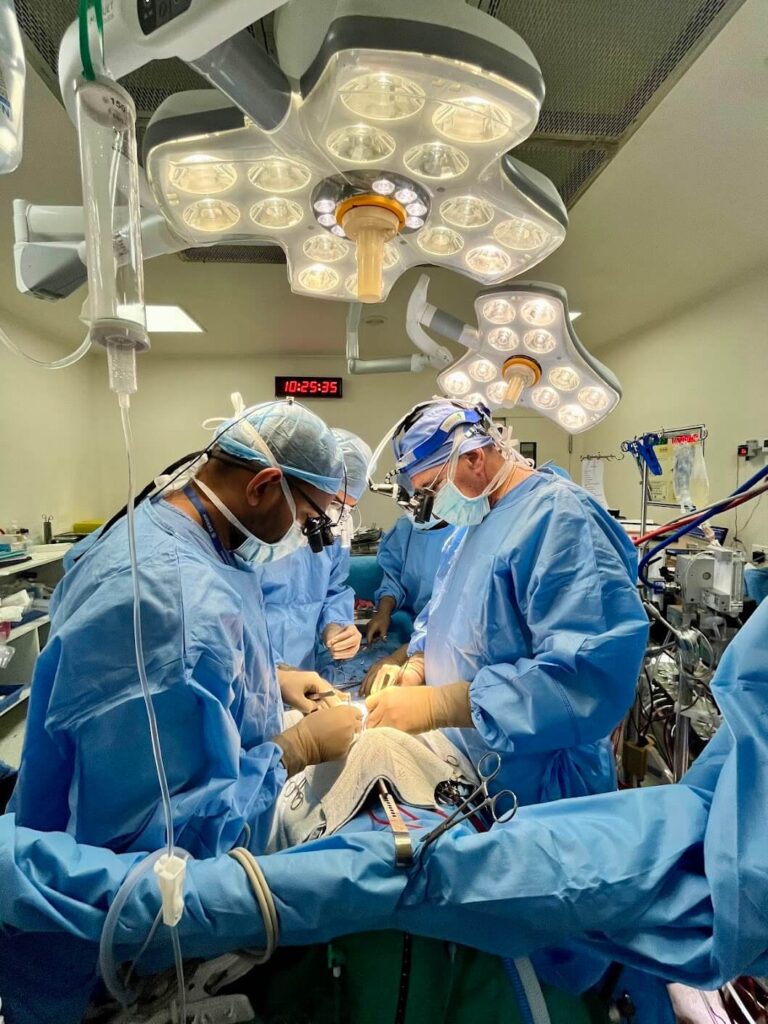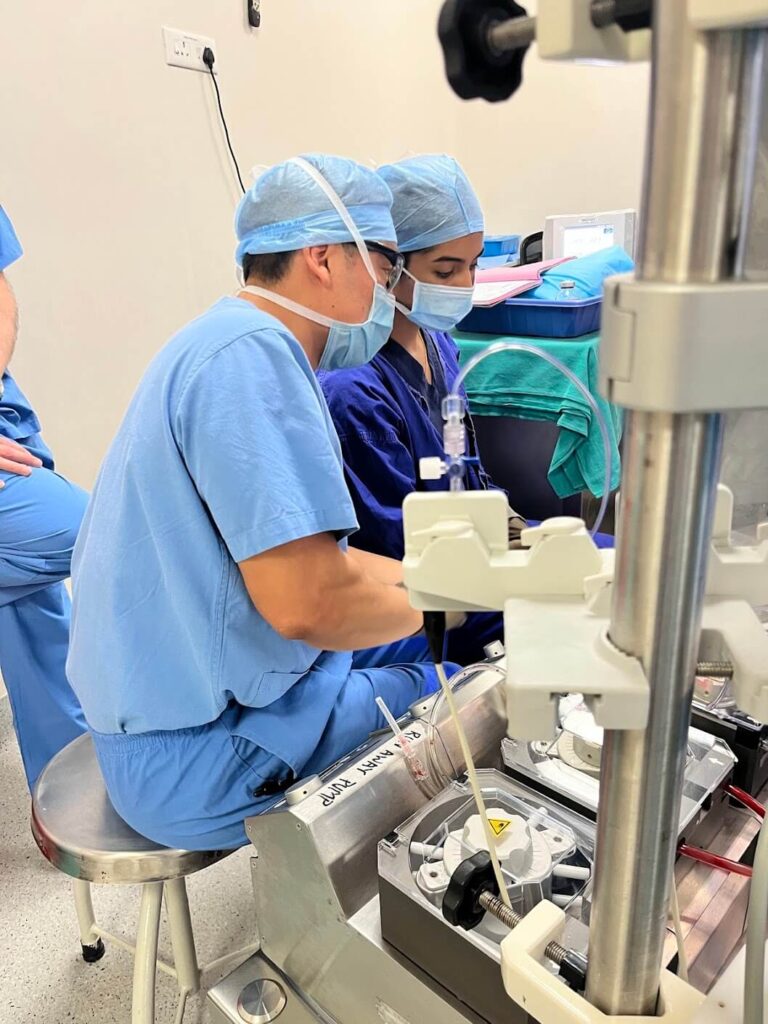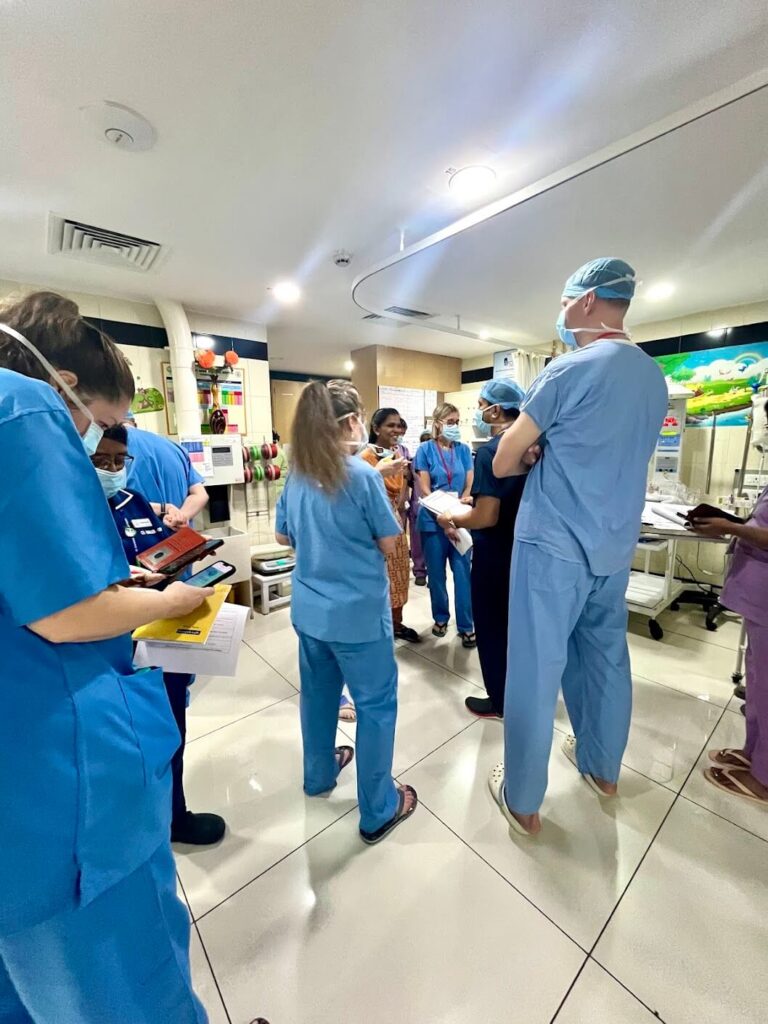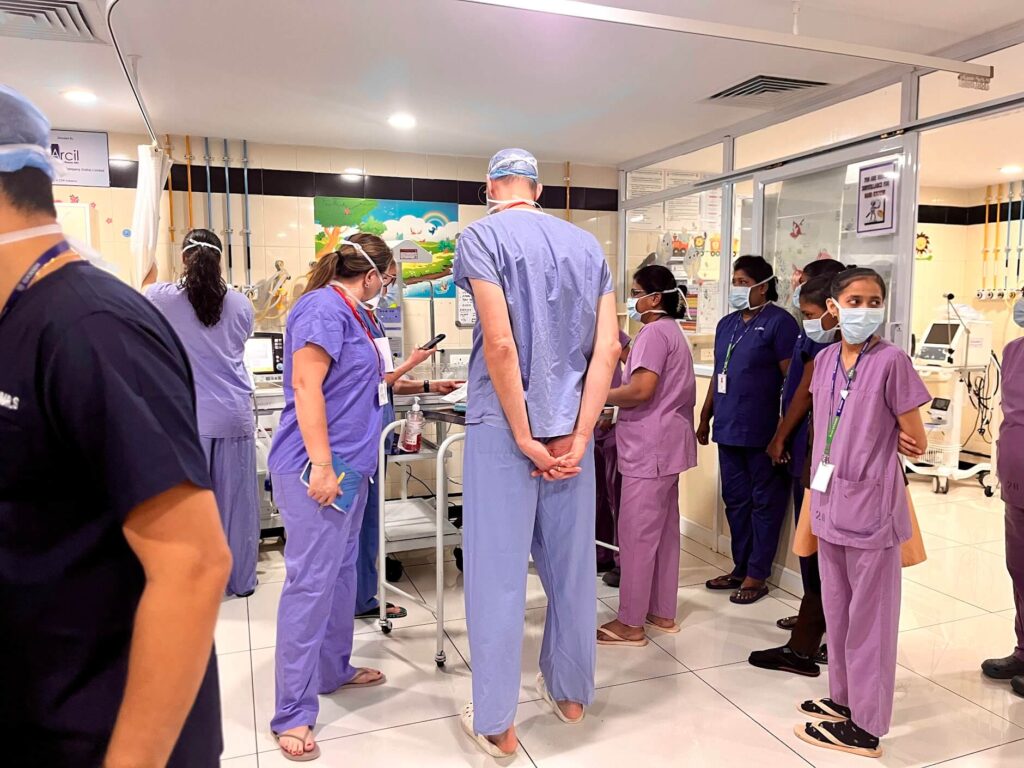March 18, 2021
Witnessing Impact, Expanding Hope for Children with CHD
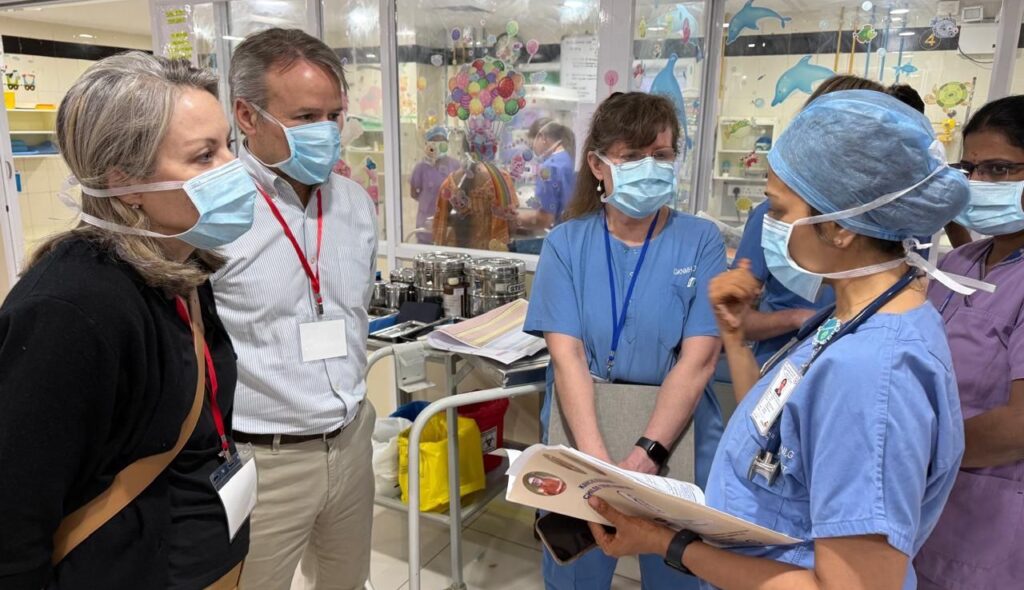
Children’s HeartLink supporter JoAnne Alkire traveled with Mayo Clinic volunteers for a pediatric heart care training visit to India in February 2025. She won this travel opportunity at the Children’s HeartLink Global Gathering in 2024 and graciously agreed to share her experience in her own words.
Our involvement with Children’s HeartLink began eight years ago. My husband and I were drawn to their work to build sustainable healthcare programs in low- and middle-income countries.
In February, we were honored to join Dr. Joseph Dearani and team from Mayo Clinic in Rochester, Minnesota, USA on their visit to G. Kuppusamy Naidu Memorial (GKNM) Hospital (located in a small metro in south India called Coimbatore, in the state of Tamil Nadu) and the team led by Dr. Raju Vijayakumar, chief of pediatric cardiac surgery.
We came home from our trip with a much richer understanding of how Children’s HeartLink is making a difference for children with heart disease today and, importantly, how they are laying the groundwork to serve more kids in the future. We feel grateful to be able to support their important work.
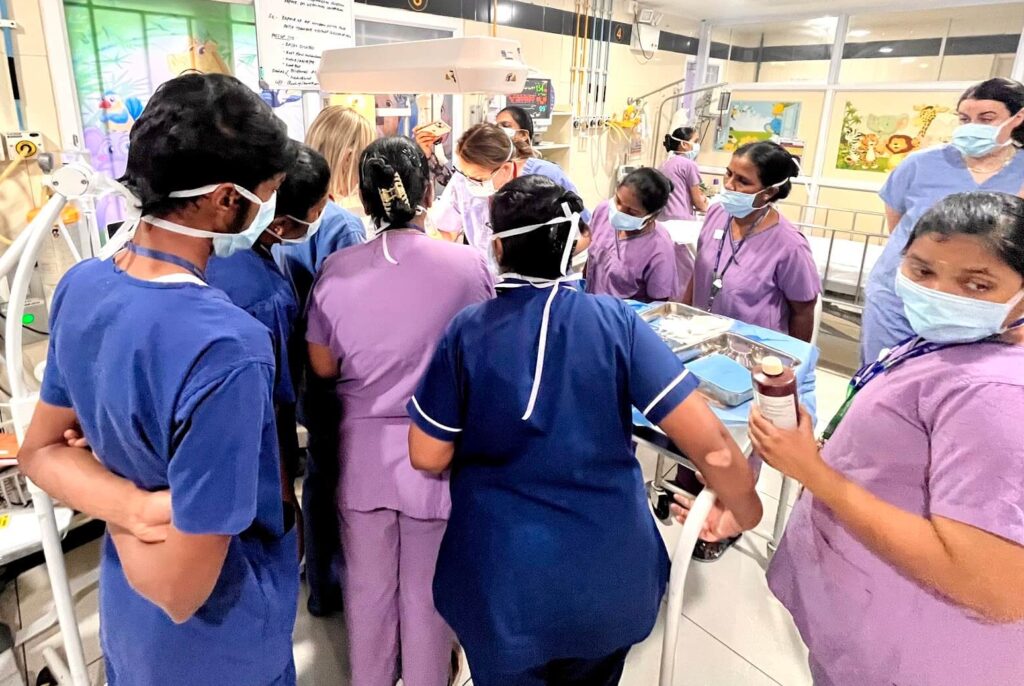
Team approach to care
What stood out most during our trip were the strong, durable partnerships at the core of Children’s HeartLink. The connections between the Mayo Clinic, GKNM Hospital and Children’s HeartLink teams have developed over eight years of collaboration. During that time, the GKNM Hospital pediatric surgery program has made remarkable progress. It’s my understanding the number of children treated by the program has grown by 50% while, in parallel, surgical mortality has been reduced to just 2%, in line with the best programs in the U.S.
Pictured: Nurses from GKNM Hospital learning to care for an infant with CHD with Mayo Clinic volunteers.
At the foundation of these results is the work being done to develop each specialty within the GKNM Hospital pediatric heart team. For example:
- Interventional cardiology physicians help the medical team understand each child’s clinical needs and plan the best surgical approach.
- Because 90% of families who visit GKNM Hospital don’t have the means to pay for treatment, the program created a role for a dedicated staff member to secure funding, so no child is turned away.
- In the operating room, surgeons are supported by anesthesiology, a perfusionist (who runs the heart-lung machine that circulates and oxygenates the blood during surgery) and surgical nurses.
- After surgery, ICU nurses, respiratory therapists and physicians called “intensivists” care for children during the first critical days of recovery.
- After patients go home, the team continues to monitor and treat them as they grow.
During our visit we saw incredible collaboration and learning as the Mayo Clinic and GKNM Hospital teams, literally, stood side-by-side in the operating room and at the bedside sharing knowledge and insight. The partnership, sustained engagement and full heart team approach are what makes Children’s HeartLink different and so effective. Swipe through to see photos from my visit.
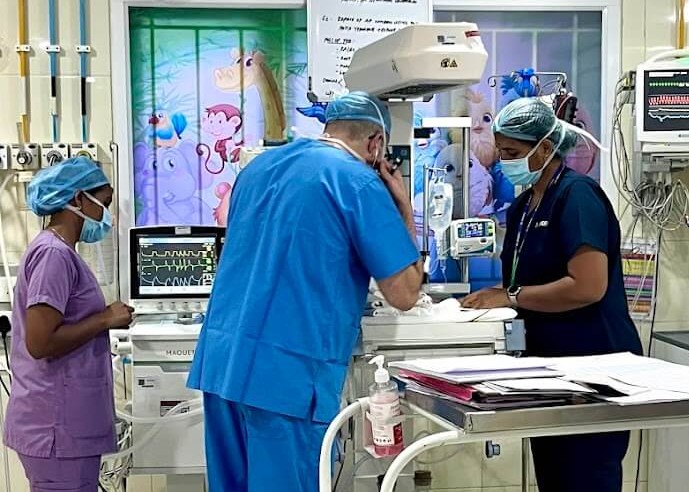
Congenital heart disease (CHD) is the leading cause of death from non-communicable diseases in those under 20 years.
While progress in interventional cardiology and congenital heart surgery has substantially reduced mortality from CHD, most children in low- and middle-income countries do not yet have access to high-quality pediatric heart care. Children’s HeartLink and their partner hospitals are playing a critical role in improving childhood survival by addressing these needs.
Pictured: Clinicians providing care to a child with CHD at GKNM Hospital.
The opportunity to improve heart care for kids
The physicians and hospital leaders we met see expanding access to pediatric heart care as essential to improving childhood survival in low- and middle-income countries. India, for example, has achieved an over 50% decrease in childhood deaths over the past few decades by addressing infectious disease and malnutrition. However, to continue to improve childhood survival, clinicians must now also address non-communicable diseases.
We also had the opportunity to visit Tiny Hearts Hospital in Thanjavur, a key referral hospital for GKNM Hospital. Drs. Maniram Krishna and Usha, a husband-and-wife team who founded Tiny Hearts, are working to increase use of prenatal screening to identify heart and other birth defects that can be best treated through early intervention. The first step is to help parents understand that, today, children with heart defects can be successfully treated and thrive.
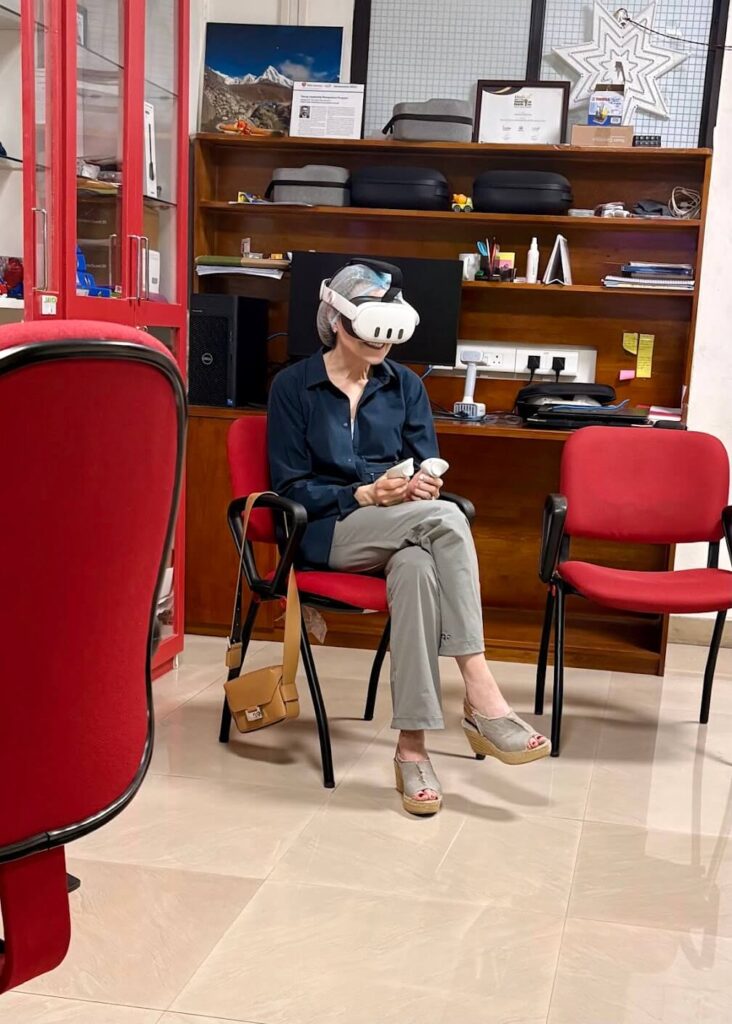
Advancing care
Resource limitations impact treatment decisions in the three hospitals we visited. Many of the physicians I spoke with talked about how this is driving innovation within Children’s HeartLink programs.
For example, the anesthesiologists at GKNM Hospital told us about using nerve blocks to reduce anesthesia levels during procedures, enabling more patients to be extubated in the operating room to help speed recovery.
Another example, Drs. Krishna Kumar and Mahesh Kappanayil at Children’s HeartLink Center of Excellence Amrita Hospital in Kochi showed us virtual reality (VR) software they are developing with the support of Children’s HeartLink. The software enables physicians to virtually visualize and interact with cardiac anatomy in 3D.
I tried on a virtual reality headset to preview the groundbreaking VR software. With the software we were able to visualize the location and size of a septal wall defect, or small hole, in a child’s heart. Physicians from hospitals around the world can log into the application together to plan surgery.
A fitting conclusion to our trip occurred in the Amrita Hospital virtual reality lab. There we met Hari, an energetic college student working with Dr. Mahesh. Five years ago, Hari was referred to Amrita from his home in a rural community. A bright kid with a passion for technology, Hari had built his own 3D printer using information found on the internet. But Hari was living with a complex and debilitating heart defect, and by the time he was referred, he had to stop attending school because he no longer had the strength to climb the steps to his third-floor classroom. After surgery, Dr. Mahesh discovered Hari’s passion for 3D visualization and invited him to join the Amrita virtual reality (VR) project. Today Hari is part of the team that will make it possible for more children to access high-quality heart care and live productive lives.
We are proud to support a program that makes success stories like this possible. We invite you to join us in supporting Children’s HeartLink.
